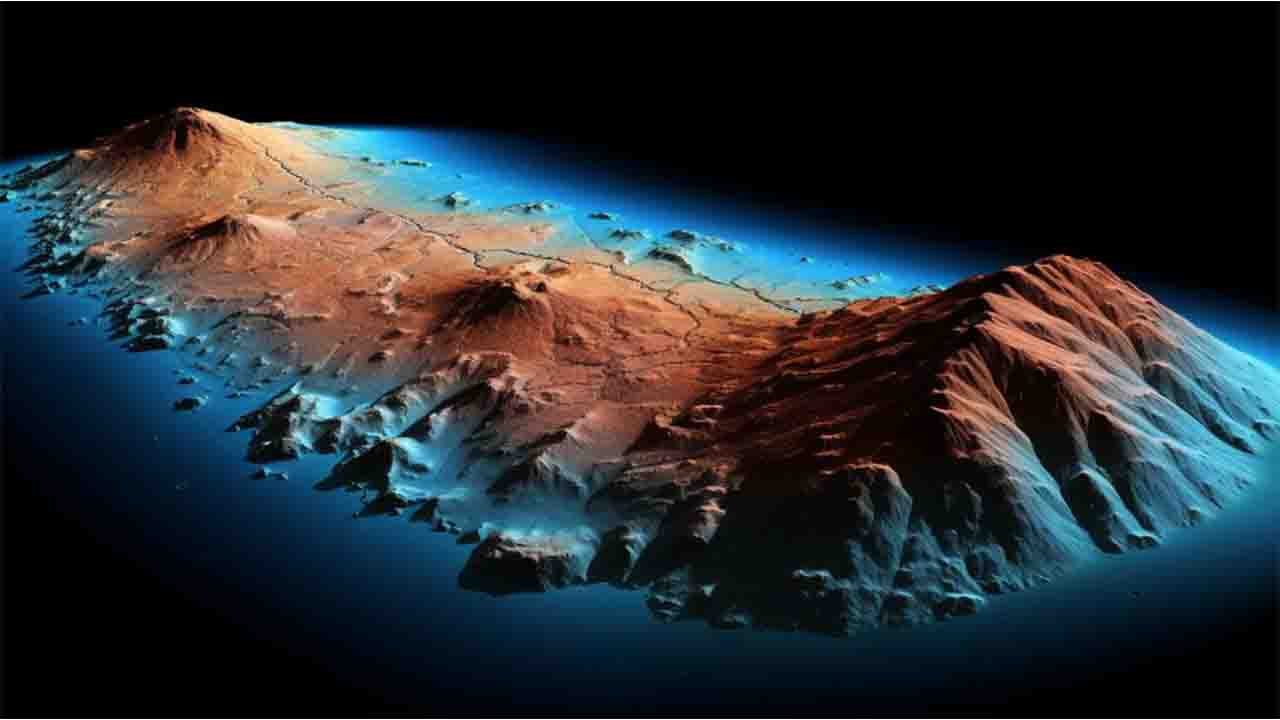A groundbreaking study led by Jaroslav Klokonk, a professor emeritus at the Astronomical Institute of the Czech Academy of Sciences, has provided compelling evidence supporting the theory that Mars once harbored a vast northern ocean. This research, based on a unique approach for assessing Mars’ gravitational force, has not only lent credence to the existence of this ancient Martian ocean but has also refined our understanding of its size and scope. The findings of this study, published in the journal Icarus, represent a significant leap in our knowledge of Mars’ geological history.
In this innovative study, Klokonk and his team, including co-author Gunther Kletetschka, an associate research professor at the University of Alaska Fairbanks Geophysical Institute and a professor at Charles University in Prague, Czech Republic, employed a novel technique to analyze Mars’ gravitational properties. This approach, different from conventional methods, promises to provide comprehensive insights into the planet’s geological, geophysical, hydrological, and glaciological characteristics.
The standard approach to studying gravitational anomalies on planetary bodies involves mapping surface features based solely on variations in gravity. In essence, areas with higher or lower gravitational forces are attributed to the presence of surface characteristics, such as mountains or ocean basins. Klokonk’s approach goes beyond this by incorporating gravity aspects, mathematical expressions that describe these anomalies.
To bolster their research, the team also utilized topography data from NASA’s Mars Global Surveyor, a mission launched in November 1996 that spent over four years meticulously mapping Mars. This combination of gravity aspects and topographical data allowed them to gain a deeper understanding of Mars’ past and present.
One of the remarkable outcomes of this study is the confirmation of the existence of ancient paleolakes or paleo-river systems beneath the Saharan dunes on Earth, a discovery Klokonk initially proposed in a 2017 publication. Moreover, this gravity-based method proved instrumental in pinpointing a shoreline from a long-ago lake in northern Africa, aligning with archaeological evidence—a testament to the technique’s precision.
Beyond Earth and Mars, Klokonk and Kletetschka’s approach has also been used to draw comparisons between Earth and the enigmatic Venus, a planet cloaked in thick clouds. In a manuscript published in the journal Scientific Reports in July 2023, Kletetschka and colleagues leveraged their gravity aspects technique to analyze geographic features on Venus, shedding new light on our understanding of this mysterious neighbor in our solar system.
The implications of this research are profound. Not only does it strengthen the case for Mars’ ancient oceans, but it also highlights the power of innovative approaches in planetary science. As the study transcends the boundaries of traditional gravitational analysis, it has the potential to provide comprehensive insights into celestial bodies far beyond our own, opening up new avenues for exploration in the realms of geology, geophysics, hydrology, and more.
In summary, Klokonk and his team’s pioneering research, driven by an inventive approach to gravitational analysis, has deepened our understanding of Mars’ geological history, reinforced the notion of its ancient ocean, and unlocked new possibilities for planetary exploration. The study exemplifies how unconventional methods can yield groundbreaking insights into the mysteries of our solar system and beyond.








